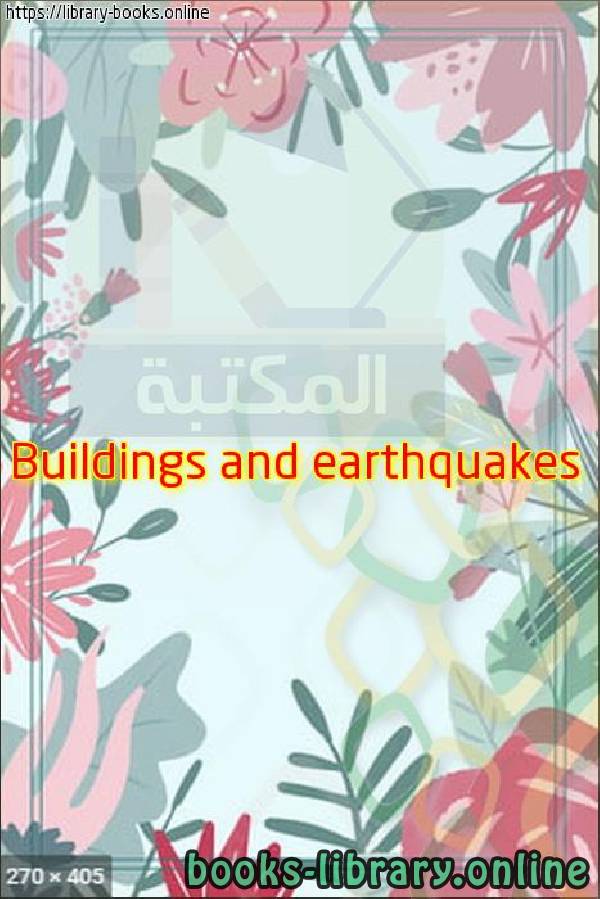📘 قراءة كتاب Buildings and earthquakes—Which stands? Which falls? أونلاين


نوته حسابيه و أحمال الزلازل لبرج سكنى
Buildings and earthquakes—Which stands? Which falls?
This document was produced to accompany the
Teachable Moment resources for Haiti
produced by IRIS and the University of Portland
Introduction
The two most important variables affecting earthquake
damage are (1) the intensity of ground shaking caused by
the quake coupled with (2) the quality of the engineering
of structures in the region. The level of shaking, in turn,
is controlled by the proximity of the earthquake source
to the affected region and the types of rocks that seismic
waves pass through en route (particularly those at or near
the ground surface).
Generally, the bigger, closer, and shallower the
earthquake, the stronger the shaking. But there have
been large earthquakes with very little damage either
because they caused little shaking in populated areas, or
because the buildings were built to withstand that kind
of shaking. In other cases, moderate earthquakes have
caused significant damage either because the shaking
was locally amplified, or more likely because the
structures were poorly engineered.
Damage during an earthquake
results from several factors
Strength of shaking.
The strong shaking produced by
a magnitude 7 earthquake becomes half as strong
at a distance of 8 miles, a quarter as strong at
a distance of 17 miles, an eighth as strong at a
distance of 30 miles, and a sixteenth as strong at a
distance of 50 miles.
Length of shaking.
Length depends on how the fault
breaks during the earthquake. The maximum
shaking during the Loma Prieta earthquake lasted
only 10 to 15 seconds. During other magnitude 7
earthquakes in the Bay Area, the shaking may last
30 to 40 seconds. The longer buildings shake, the
greater the damage.
Type of soil.
Shaking is increased in soft, thick, wet soils.
In certain soils the ground surface may settle or
slide.
Type of building.
Certain types of buildings, discussed
in the reducing earthquake damage section, are
not resistant enough to the side-to-side shaking
common during earthquakes.
Resonant frequency of building.
See page 3.
From USGS
http://quake.usgs.gov/prepare/future
/
Activities pages 4-5 (touch to go there)
Haiti Devastation Exposes Shoddy Construction
see next page for text and link to video!!!!
towerpdf
what is earthquake
earthquake causes
earthquake effects
how earthquakes happen
earthquake information
types of earthquakes
earthquake definition
earthquake causes and effects
نوع الكتاب : zip.
عداد القراءة:
اذا اعجبك الكتاب فضلاً اضغط على أعجبني و يمكنك تحميله من هنا:

شكرًا لمساهمتكم
شكراً لمساهمتكم معنا في الإرتقاء بمستوى المكتبة ، يمكنكم االتبليغ عن اخطاء او سوء اختيار للكتب وتصنيفها ومحتواها ، أو كتاب يُمنع نشره ، او محمي بحقوق طبع ونشر ، فضلاً قم بالتبليغ عن الكتاب المُخالف:
 قبل تحميل الكتاب ..
قبل تحميل الكتاب ..
يجب ان يتوفر لديكم برنامج تشغيل وقراءة ملفات pdf
يمكن تحميلة من هنا 'http://get.adobe.com/reader/'


 منصّة المكتبة
منصّة المكتبة